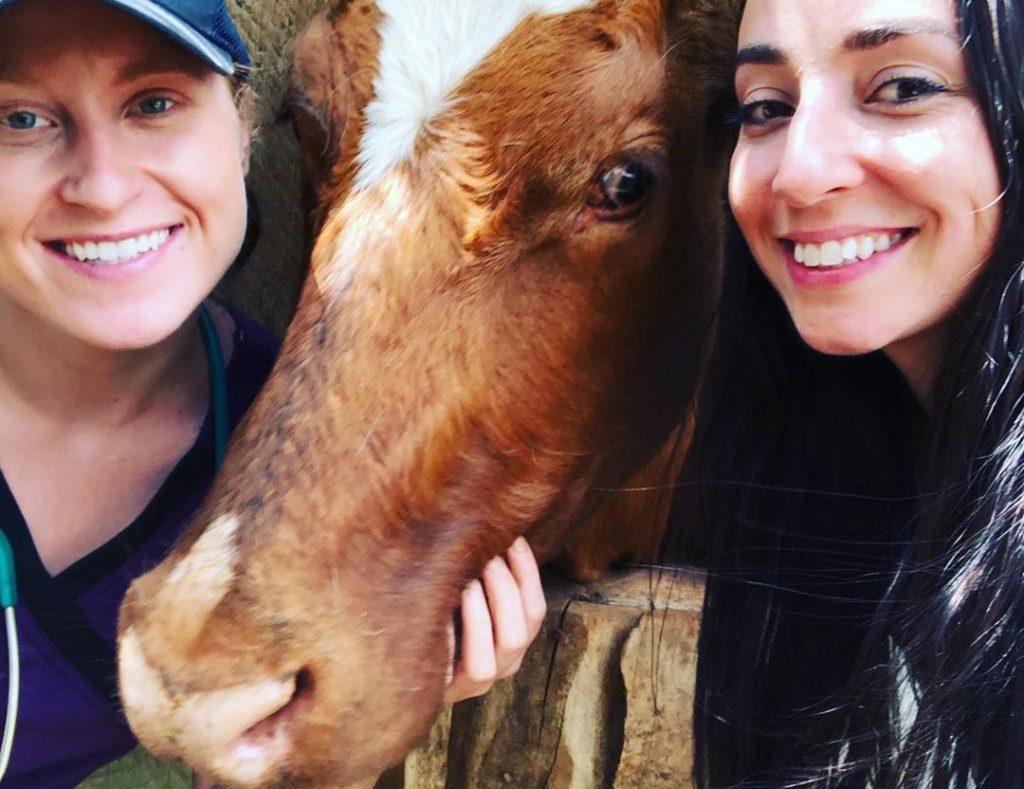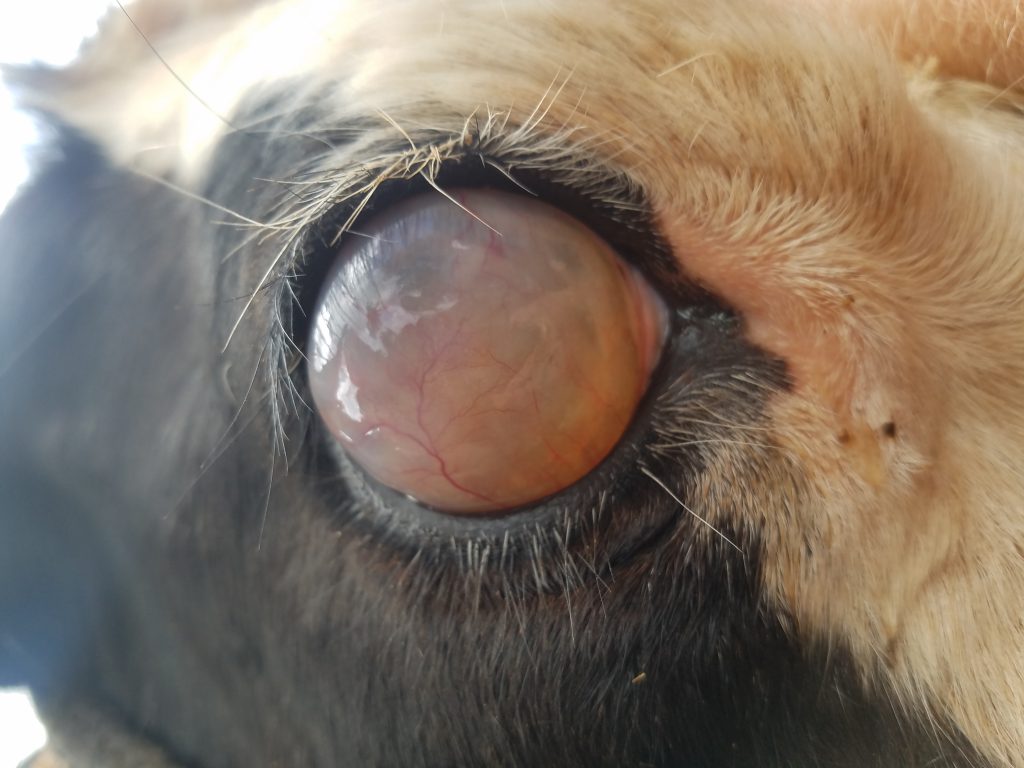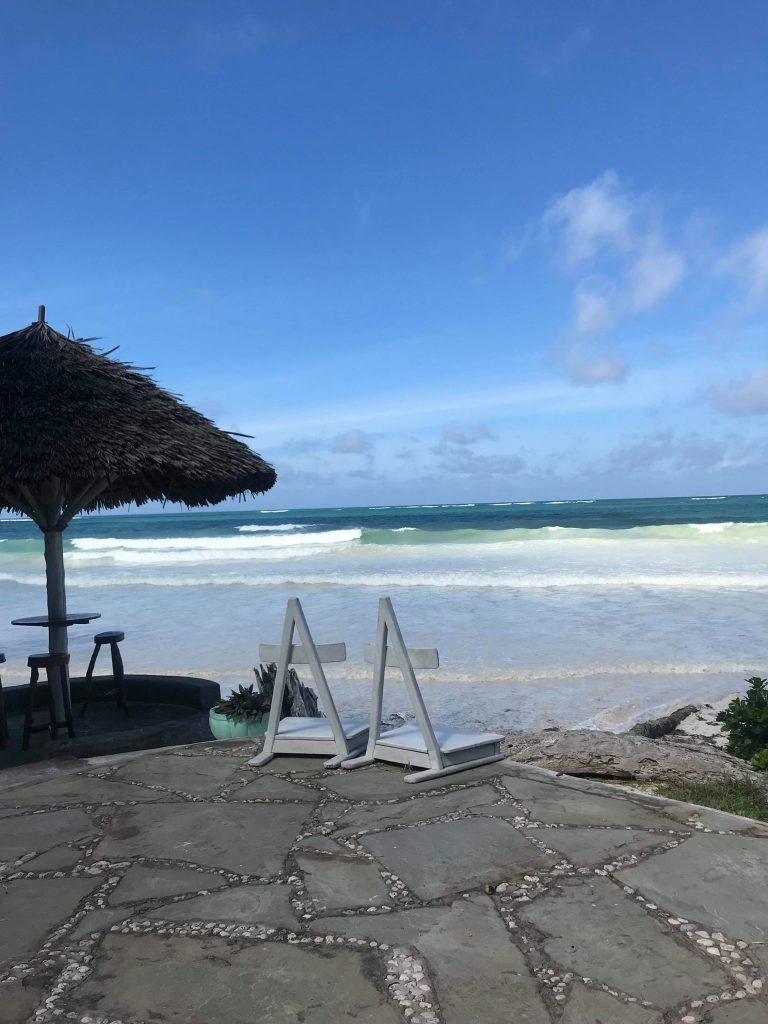By: Hanna Hone and Chantel Doyle – QES Vet Interns – July 2/19
This was our last week of work before our break and we couldn’t have asked for better! The BVDV project rolled forward as we began taking secondary blood samples from the vaccinates we started with three to four weeks ago. We take paired samples so that Daniel’s analysis can compare the blood before and after vaccination and we can gauge the immune response and how strong it is relative to body condition scores and nutritional management. It was also lovely to revisit the farms we started with and see which of our recommendations they’ve been able to implement. The farmer’s welcoming smiles and thankful handshakes made the revisits that much more rewarding. It was also a nice treat seeing the cows more comfortable and getting a second cuddle session with the really sweet ones.

[Pic 1: cow selfies are the best selfies]
Revisiting specific zones and retaking blood also gave us the opportunity to hit up any farms we missed or were unable to get to due to rain or running out of vaccine doses. These farmers have seen us visiting their neighbors and they were quite grateful that we finally made it to their homes too.
With every week comes new discoveries and this one was no different. One thing we commonly see is the use of barbed wire along pens and we always make an effort to warn people of its danger. We’ve now seen a handful of trauma cases as a result of this fencing material including lacerations, eye injuries and even traumatic reticuloperitonitis (aka. “Hardware” disease – the animal consumes pieces of metal which eventually irritate/puncture the stomach lining, causing an abdominal infection and sometimes death

[Pic 2: blind eye with exopthalmos caused by a barbed wire injury]
While it can be sad to see these cases, they are good experiences to share with other farmers to give them incentives to really make some changes. It is powerful to see people take pride in their work and actually take what we have to offer to heart. It’s been an enlightening experience learning the different values people place on their animals. While at times it is frustrating, adding a “Canadian” perspective on the value of their animals has been very rewarding.
One thing we have noticed is that some farmers don’t realize the importance of having water available to their rabbits, cats, and dogs at all times. The roaming animals can scavenge and find water, but other animals, such as some dogs, are tied up and have no way to access it unless it is provided. We explain that all living things need water, humans and animals alike, and this slight switch in perspective can make a big difference to the welfare of their animals. This topic has become an emphasis for us, particularly when we chat with any children on a farm. We ask the children what is their role in taking care of their animals, and we encourage them to treat their animals as friends and provide them with a lot of the same necessities they would want for themselves. Daily water, food, a clean and comfy place to sleep, and a little affection go a long way toward a content and happy animal. We enjoy these conversations and always look forward to seeing any changes on revisits.
We love the work we get to do with cows and farmers every day and really appreciate it when farmers allow us to challenge ourselves and take on something a little more outside the box with other species. While at one home removing dried meconium (calf’s first defecation) from a calf’s tail, we noticed a dog whose penis was protruded and too swollen to retract back into the prepuce sheath. Almost all mammal penises have foreskins or prepuce, although in non-human cases the foreskin is usually a sheath into which the whole penis is retracted. When we inquired about the dog, the owner said that the dog penis was injured during breeding, and the penis had been unable to return to its normal position within the sheath for three months. After examining and cleaning the penis, we were happy to find no ulcerations or open wounds. That day, we treated him with an intramuscular steroid injection for the inflammation and returned the following morning with the proper surgical tools to hopefully make a more permanent change for this sweet young dog. Upon returning, we were happy to see that the steroid had done its job. The swelling had dramatically reduced, and so we were able to sedate the dog with Xylazine, and then perform a local lidocaine nerve block and incision around the opening of the sheath to allow the penis back inside the sheath. Cleaning and prepping the area while trying to maintain sterility was quite the task in the field, especially with another puppy, kittens and many curious chickens trying to figure out what we could possibly be doing to their buddy. Luckily, our patient was a joy to work with and even more lovable in his sedated state, making the handling and recovery quite smooth. With the penis cleaned and treated with an antibiotic (we used a bovine intramammary infusion tube applied topically), the penis was returned to its normal spot and held in place with a purse-string suture around the sheath opening, and then one more steroid injection, we were happy and confident he would make a good recovery. We left some pain medication for the owner to administer over the next few days. Yes, this can really happen to an intact male dog (and other animals that have a sheath) – what a serendipitous farm call, for the dog, the dog owners, and for us!

[Pic 3: Team work makes the dream work]
Well, that’s all for now. We’ll be back with more updates (and hopefully a more even farmers tan) once we return from our break on the Kenyan South-East coast.

[Pic 4: Mombasa beach break]
Hanna & Chantel
